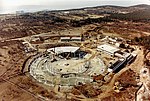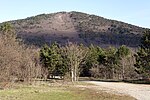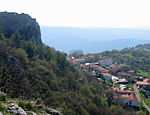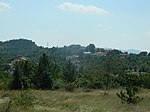Foibe massacres

The foibe massacres (Italian: massacri delle foibe; Slovene: poboji v fojbah; Croatian: masakri fojbe), or simply the foibe, refers to mass killings both during and after World War II, mainly committed by Yugoslav Partisans and OZNA in the then-Italian territories of Julian March (Karst Region and Istria), Kvarner and Dalmatia, against the local ethnic Italian population (Istrian Italians and Dalmatian Italians), as well the ethnic Slovenes, Croats and Istro-Romanians who chose to maintain Italian citizenship, against all anti-communists, associated with fascism, Nazism, and collaboration with the Axis powers, and against real, potential or presumed opponents of Titoism. The type of attack was state terrorism, reprisal killings, and ethnic cleansing against Italians.The Yugoslav partisans intended to kill whoever could oppose or compromise the future annexation of Italian territories: as a preventive purge of real, potential or presumed opponents of Titoism (Italian, Slovenian and Croatian anti-communists, collaborators, and radical nationalists), the Yugoslav partisans exterminated the native anti-fascist autonomists — including the leadership of Italian anti-fascist partisan organizations and the leaders of Fiume's Autonomist Party, like Mario Blasich and Nevio Skull, who supported local independence from both Italy and Yugoslavia — for example in the city of Fiume, where at least 650 were killed after the entry of the Yugoslav units, without any due trial.The term refers to the victims who were often thrown alive into foibe (from Italian: pronounced ['fɔibe]), or into deep natural sinkholes characteristic of the karst regions (by extension, it also was applied to the use of mine shafts, etc., to hide the bodies). In a wider or symbolic sense, some authors used the term to apply to all disappearances or killings of Italian people in the territories occupied by Yugoslav forces. They excluded possible 'foibe' killings by other parties or forces. Others included deaths resulting from the forced deportation of Italians, or those who died while trying to flee from these contested lands. The foibe massacres were followed by the Istrian–Dalmatian exodus, which was the post-World War II exodus and departure of local ethnic Italians (Istrian Italians and Dalmatian Italians) from the Yugoslav territory of Istria, Kvarner, the Julian March, lost by Italy after the Treaty of Paris (1947), as well as Dalmatia, towards Italy, and in smaller numbers, towards the Americas, Australia and South Africa. According to various sources, the exodus is estimated to have amounted to between 230,000 and 350,000 Italians (the others being ethnic Slovenes, Croats, and Istro-Romanians, who chose to maintain Italian citizenship) leaving the areas in the aftermath of the conflict.The estimated number of people killed in the foibe is disputed, varying from hundreds to thousands, according to some sources 11,000 or 20,000. The Italian historian, Raoul Pupo estimates 3,000 to 4,000 total victims, across all areas of former Yugoslavia and Italy from 1943 to 1945, with the primary target being military and repressive forces of the Fascist regime, and civilians associated with the regime, including Slavic collaborators. He places the events in the broader context of "the collapse of a structure of power and oppression: that of the fascist state in 1943, that of the Nazi-fascist state of the Adriatic coast in 1945."The events were also part of larger reprisals in which tens-of-thousands of Slavic collaborators of Axis forces were killed in the aftermath of WWII, following a brutal war in which some 800,000 Yugoslavs, the vast majority civilians, were killed by Axis occupation forces and collaborators, with Italian forces committing war crimes. Similar postwar reprisals occurred in other countries, including Italy, where the Italian resistance and others killed an estimated 12,000 to 26,000 Italians, usually in extra-judicial executions, the great majority in Northern Italy, just in April and May 1945.
Excerpt from the Wikipedia article Foibe massacres (License: CC BY-SA 3.0, Authors, Images).Foibe massacres
SS14, Trieste Altipiano Est
Geographical coordinates (GPS) Address Nearby Places Show on map
Geographical coordinates (GPS)
| Latitude | Longitude |
|---|---|
| N 45.631666666667 ° | E 13.8625 ° |
Address
Josef Ressel
SS14
34018 Trieste, Altipiano Est
Friuli-Venezia Giulia, Italy
Open on Google Maps









